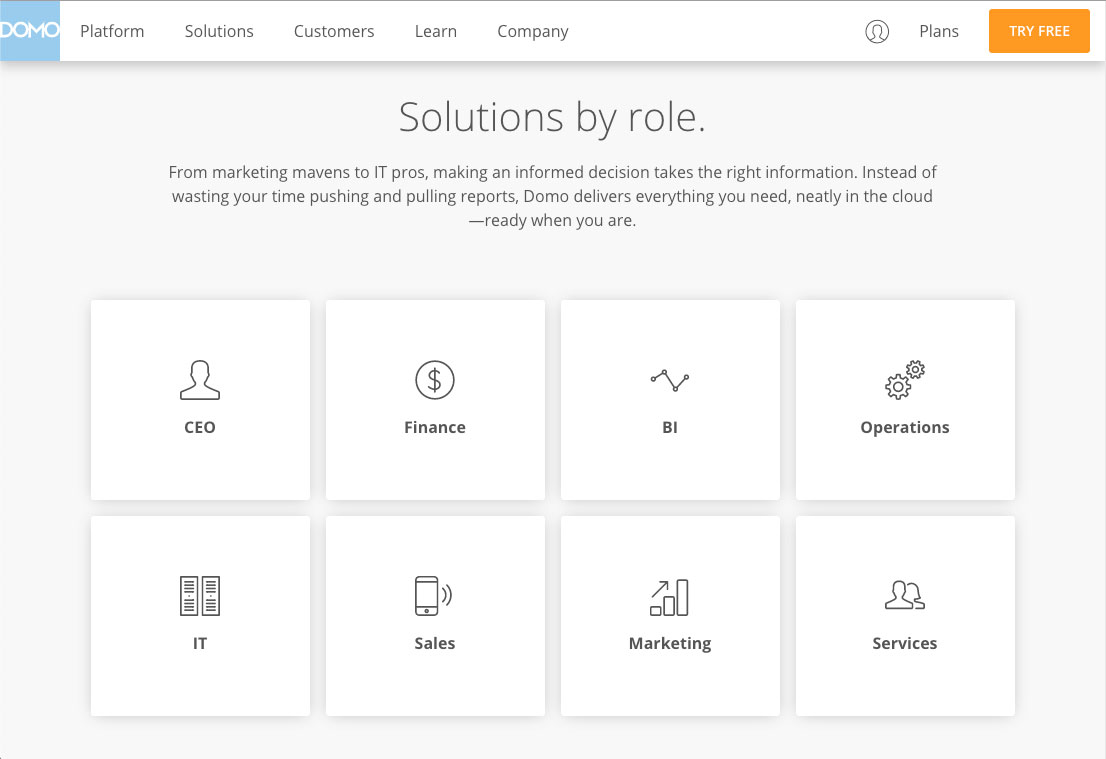The Power of a Messaging Matrix to Boost Relevance, Engagement & Conversions
As marketers, we know that developing messaging for a brand, product or service is complex. Part science, part art, expressing your brand’s value in a way that will resonate often requires tools that offer insights into your audience and the unique aspects of your offering.
For that message to really connect with your audience, you need structure and consistency. That’s why many of today’s successful brands use a messaging matrix.
What is a messaging matrix?
Your brand’s unique message is one of its most important attributes. However, a lot of organizations find it difficult to express what makes their brand different. A messaging matrix can help. It simplifies the strategy you need to penetrate a target persona.
Without it, there can be a bit of chaos. Think young kids on the soccer field – they each just keep running around in circles. Nobody’s really sure what to do with the ball. They don’t yet understand the concept of a team having a coordinated attack.

On the other hand, when you see the pros play soccer, everyone’s in sync, knows where they need to be, and has a plan. They are following their playbook.
That’s what your messaging matrix can be – the backbone of your strategic communications. It’s a thoughtful, coordinated approach that guides your delivery of the right message to the right audience consistently. But it’s no easy task to develop a messaging matrix.
You’ll need to distill data and understand your audience intimately. Then, you have to accept that in the modern world, there’s a lot of noise-so your message must stand out while being true to your brand.
So, do you want to take a shot at a messaging matrix? Let’s talk about how to build your framework and the benefits you’ll find from developing this playbook.
Why Create a Messaging Matrix – Your Tool to Relevance, Engagement, and Conversions
You may think you’re doing well with your messaging. Maybe you even have a strong content marketing plan and content calendar. Well, those are great foundational things, but does your message really rise above the noise for specific target audiences? Can they hear you?
Sometimes, sure. But your matrix gives your brand a bit of a superpower. Instead of your team just kicking the ball back and forth, you’re here to make goals. The messaging matrix is the thoughtful game plan that makes this possible.
Penetrate Targets with the Right Message
With a matrix, you can quickly identify the right message for the persona that you’re focused on right now. Whether that be in the form or an email marketing campaign, a sales offer or a blog post, the matrix reminds you of the key benefits about which they care, so you can clearly communicate it within your content.
Align Sales and Marketing Better
The matrix reminds sales and marketing that they are on the same team. You can align your messaging to create a more unified customer experience along the buyer’s journey.
Remove Assumptions
The road to great intent in your marketing is paved with assumptions. Unfortunately, they may lead you to a dead end. It’s very common for companies to have some erroneous assumptions about how well you know your audience. Ask yourself these questions:
- Is our audience segmentation sufficient to identifying specific personas?
- Do our sales funnels accurately depict the phases of our buyers’ journey?
In a ideal world, you’d have quantitative and qualitative data to reinforce the validity of your target audiences, the challenges they face, and the journey that they undertake to purchase your offering.
Consistent Messaging Enhances Your Data Around Effectiveness
With consistent messaging being used across customer touch points, it’s easier to aggregate data, measure the effectiveness of what you’re doing and use it to identify improvements. In fact, you can use target audience metrics to build more personalized content!
A Recipe for Creating a Delicious Messaging Matrix
Recipes typically have two main components: the ingredients list and the instructions. Here’s your recipe for cooking up your messaging matrix playbook.
The Ingredient’s List
- 1 table full of stakeholders – a messaging matrix should never be created in a vacuum
- X number of data-backed buyer personas – documentation on each target persona to be referenced during your discussion
- A messaging matrix worksheet/template (free download below) – a formatted worksheet that you’ll complete together
The Instructions
First, host a messaging workshop with all your stakeholders so you can get all their insights and messaging ideas in one place. This should include sales, executives, product managers, and basically anyone who has a hand in developing your product or service.
To kickoff your meeting, start with a review of your buyer personas so all parties have a fresh understanding of who you’re targeting and what their worlds look like. Persona documentation will typically include:
- Buyer information: persona, industries, interest level
- Sales information: inbound vs. outbound, stages in the sales cycle
- Value: product advantages, value proposition, and case studies
- Paint points: what is driving this prospect to a solution? Wordstream identifies four types of pain points-financial, productivity, process, and support, each vitally important in constructing your matrix.
Next, identify and document your key messages within your messaging matrix template. Define how you are speaking to prospects. This is where you take the messaging that you have created to show relevance to that target.
- How does using your product or service address pain points?
- What kinds of stats do you have to support your claims?
- What are the differentiators of your product or service?
- What are the additional benefits of using your product or service?
The resulting document should clearly show that when (for example) targeting Persona A, we need to focus on articulating message #2, #6 and #10.
Messaging Matrix – Learning by Example
Most matrices start with a template and there are several variations. Here are a few examples that give you a peek at what to expect.
Pardot shared a messaging matrix completed for video conferencing business Highfive:

Note that their messaging matrix starts with the brand promise then continues to support that promise with message and voice.
Now, how does a brand take this matrix and apply it? One example is by creating content on your website that speaks to each target. For example, business intelligence company Domo has an individual solution page for each persona under their solutions tab:

Source: Domo.com
Messaging Matrices and Improving Engagement and Conversions
Can a messaging matrix truly enable better engagement and conversions? The goal of your messaging is to control perception and change behavior. You should already have data that demonstrates if your content is effective.
When you have a messaging matrix, which should be a fluid document by the way, there’s no guessing about what your next ad, blog posts, or infographic should relay to that target. Remember, you have a playbook now. The more aligned you stay to it, the higher the probability that your engagement and conversions will improve.
On the conversion front, we know that crafting messaging to increase personalization has a big impact on conversions. One study found that 44% of buyers will likely become repeat customers due to personalization .
Time to Get Cooking
Are you ready to take our recipe and start cooking up your new messaging matrix playbook? Download our handy template to get things started. You’ll find that doing this exercise is well worth it and could give your content the boost it needs!
Interested in more templates? We have you covered.



